Westminster Abbey in London holds a profound historical significance, having witnessed 40 coronations of monarchs over the past millennium. Moreover, it serves as the final resting place for over 3,000 prominent figures in British history. Recognizing its cultural and architectural importance, Westminster Abbey was inscribed as a UNESCO World Heritage site in 1987.
The construction of the present church commenced in 1245 according to designs by Henry of Reynes, featuring a French Gothic architectural style characterized by flying buttresses and rose windows. Marking a significant milestone in its construction, the church's vaulting was finalized in 1517. Christopher Wren, renowned for his work on St. Paul’s Cathedral, was the first to hold the position of Surveyor of the Fabric of Westminster Abbey, overseeing its maintenance and structural integrity between 1698 and 1723.
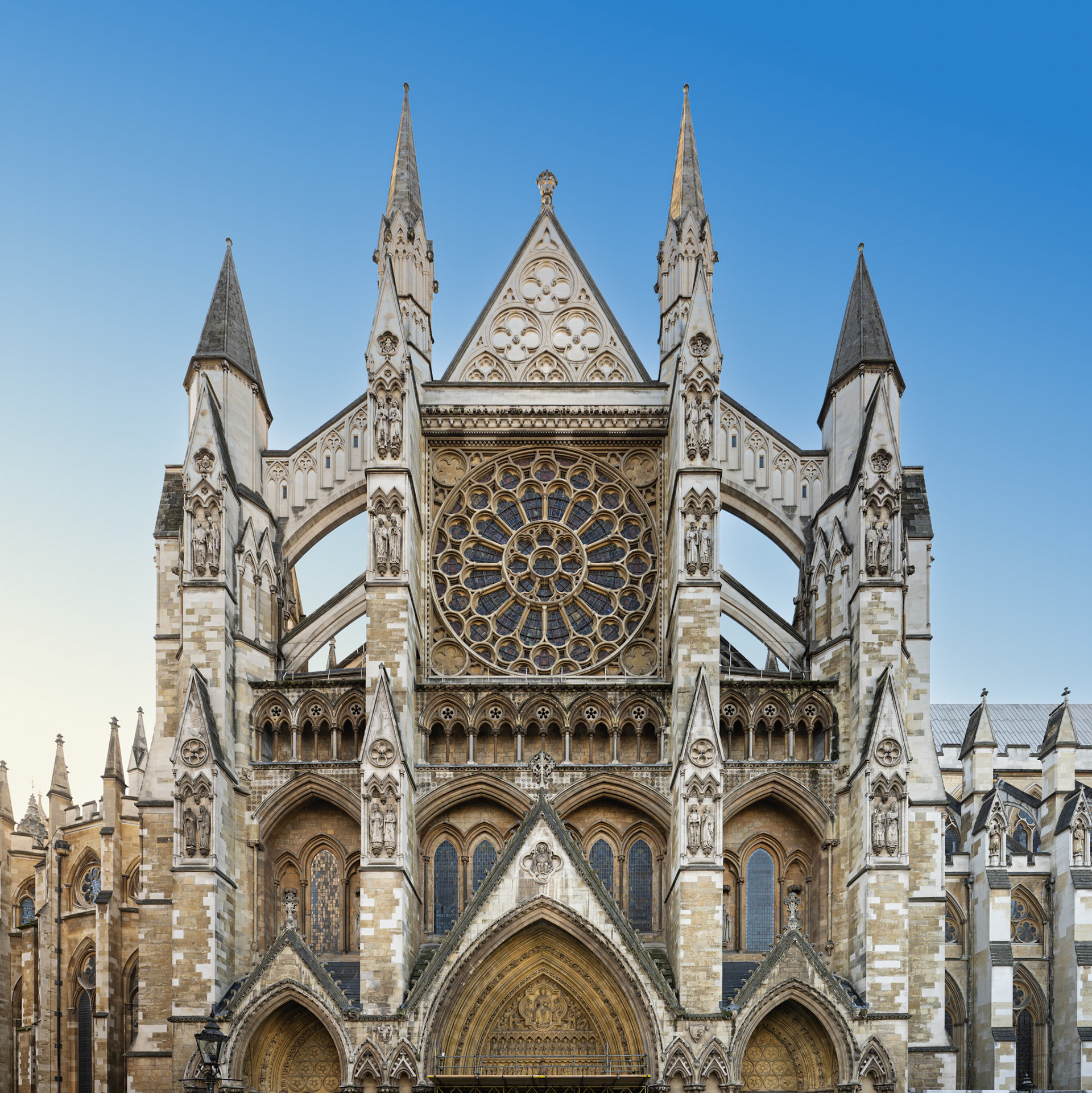
Westminster Abbey's North transept facade and rose window
The screen separating the nave from the quire dates from 1834 and was designed by Edward Blore. The organ, installed above it, has an impressive 7000 pipes. The current choir stalls were installed in 1848 and are also the work of Edward Blore. The high altar was designed by George Gilbert Scott in 1867.
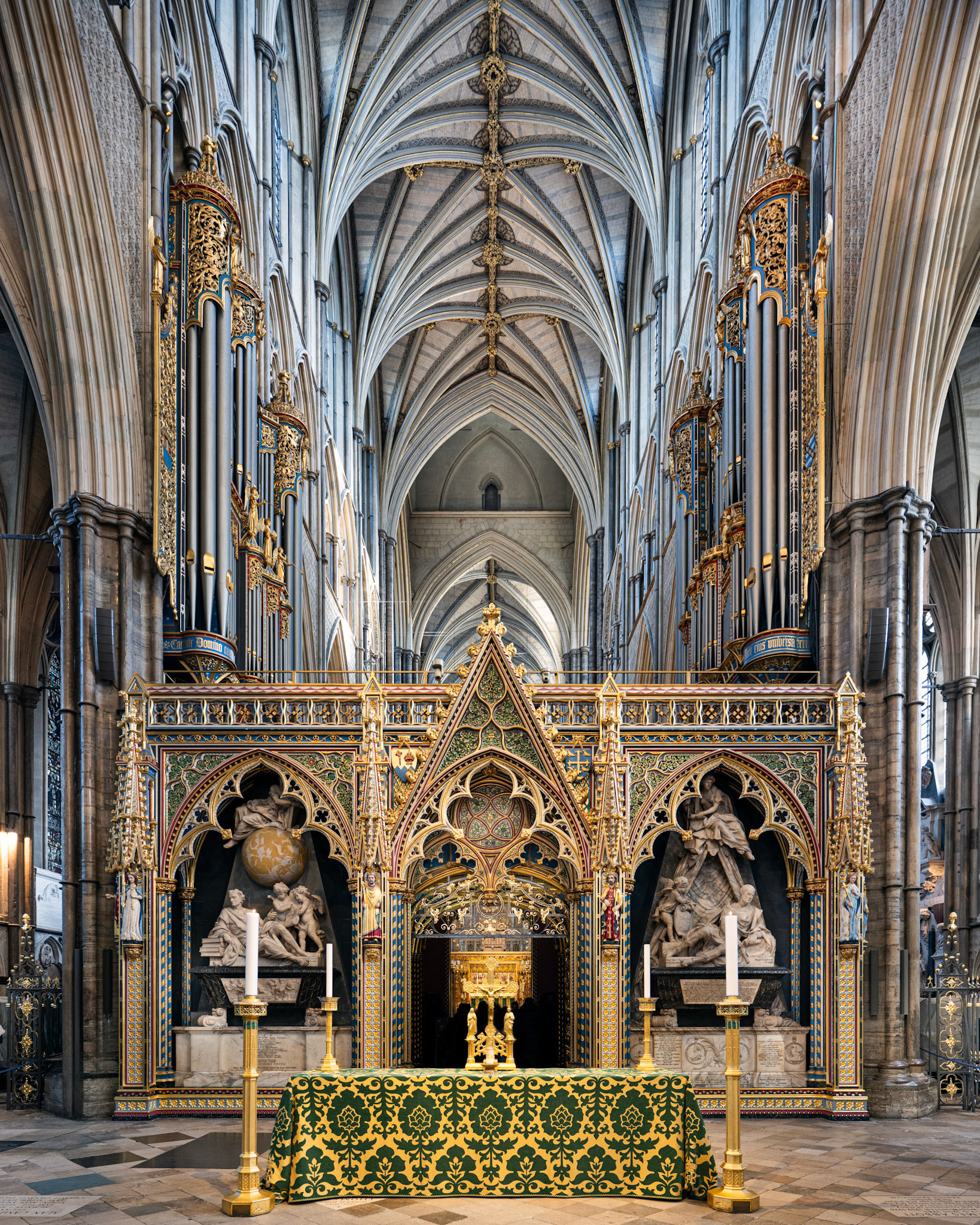
screen separating the nave from the quire
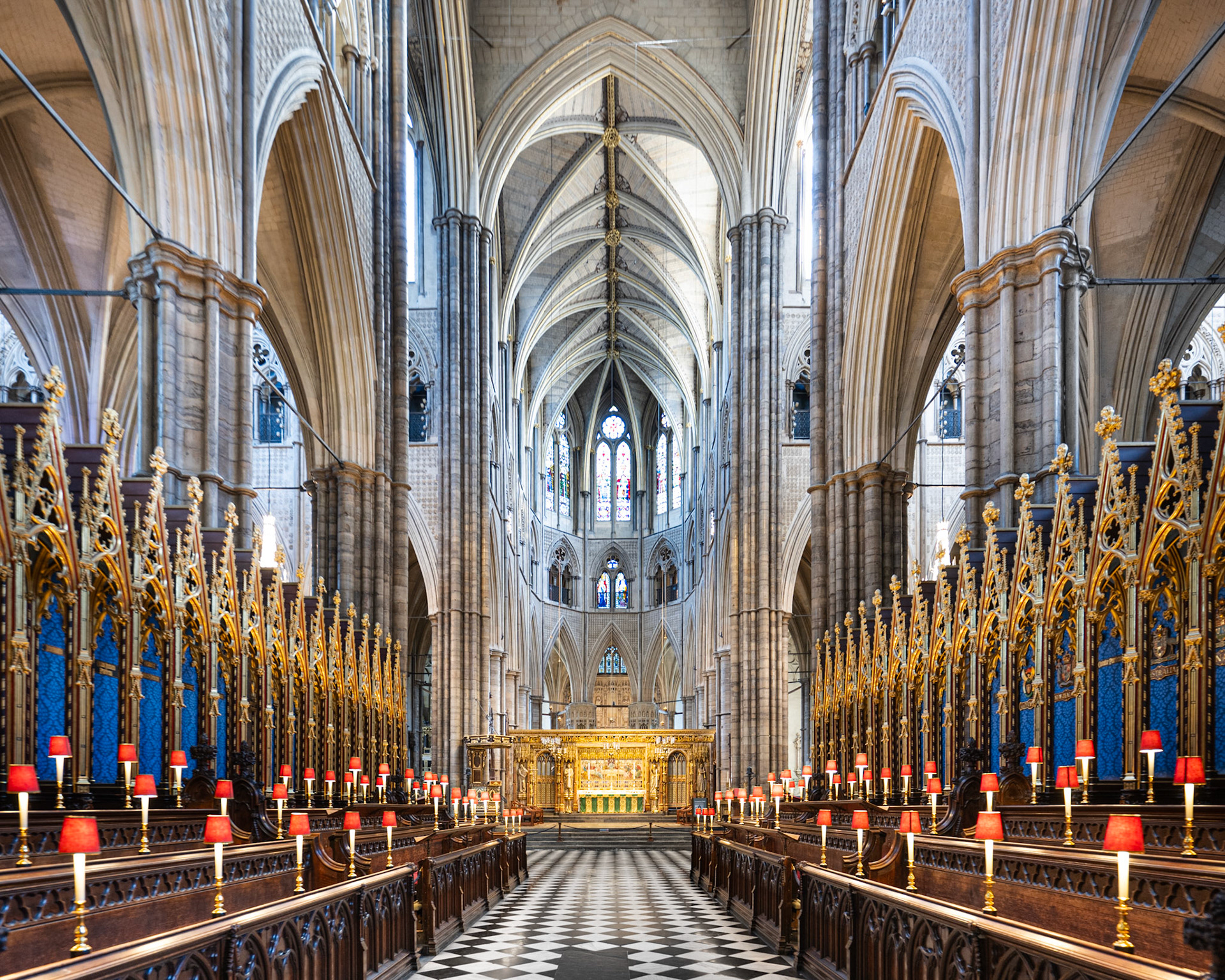
Westminster Abbey's choir stalls, designed by Edward Blore
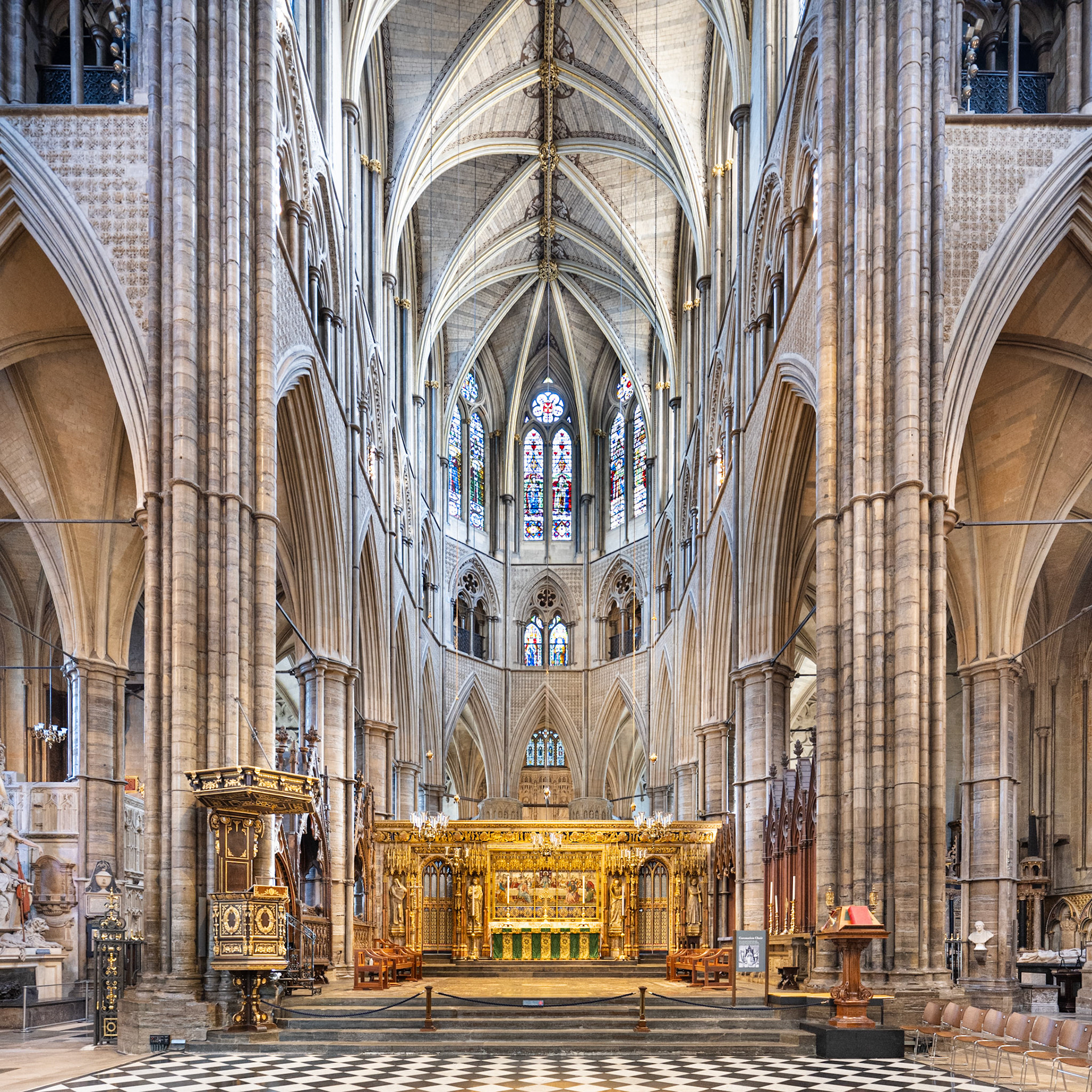
Westminster Abbey's high altar
The lantern was destroyed during an air raid in the night of May 10 to May 11 1941. It was restored after the war to plans by Stephen Dykes Bower, Westminster Abbey’s Surveyor and now features a ceiling in painted mahogany.

Westminster Abbey's lantern ceiling at the crossing of the nave and transept is painted in mahogany
The west window of the nave was designed by James Thornhill and created by William Price in 1735. The glass of the south transept rose window was created by English company Burlison & Grylls in 1902. This section of the southern transept is known as the Poets’ corner as many poets and writers are buried or commemorated here. Among the most famous ones are Charles Dickens, Rudyard Kipling, Jane Austen, Charlotte Brontë, Lord Byron, Lewis Carroll, T.S. Eliot and musician Georg Friedrich Händel. The Waterford crystal chandeliers were a gift of the Guinness family to mark the 900th anniversary of the abbey's founding in 1965. They are composed of 500 pieces of glass and are 3 meters long and 1 meter wide.

Westminster Abbey's nave and west window

Poets' corner and south transept rose window
The Lady Chapel was built between 1503 and 1512. It features a spectacular fan vaulting.
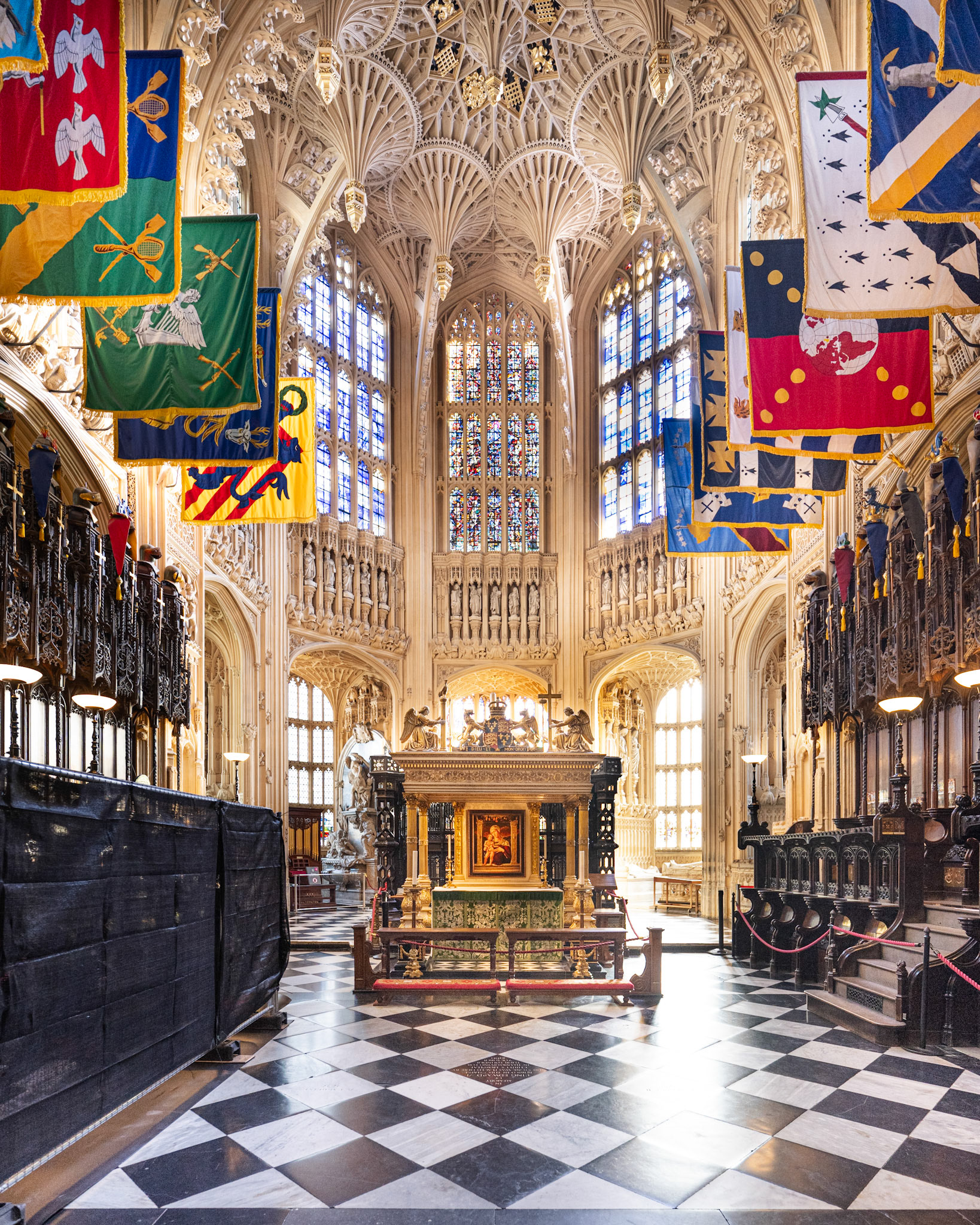
Lady Chapel, built between 1503 and 1512
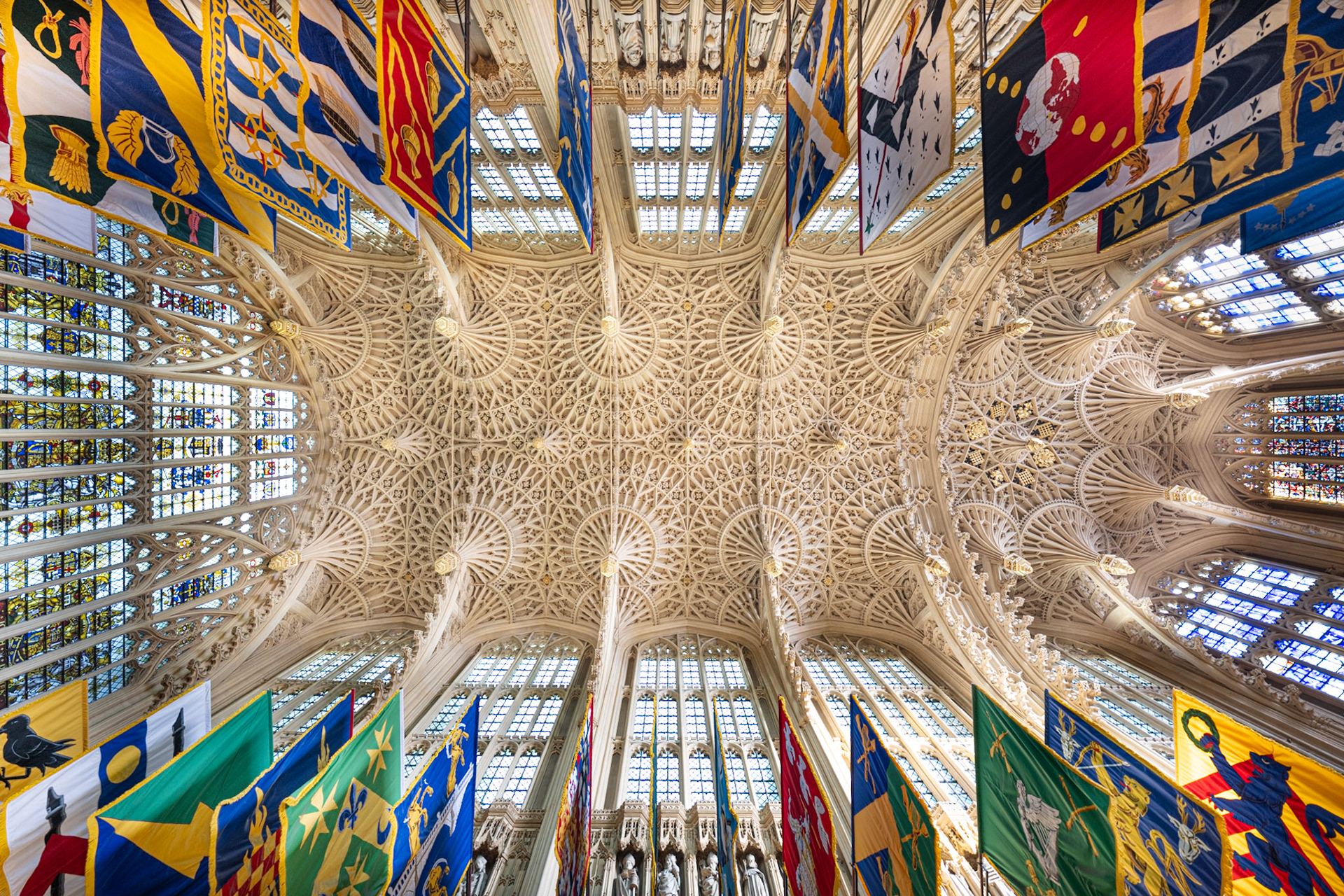
Lady Chapel fan vaulting
The cloisters of Westminster Abbey date from the 13th to the 15th century. With a length of around 30 meters, the Benedictine monks used them for meditation and exercise.
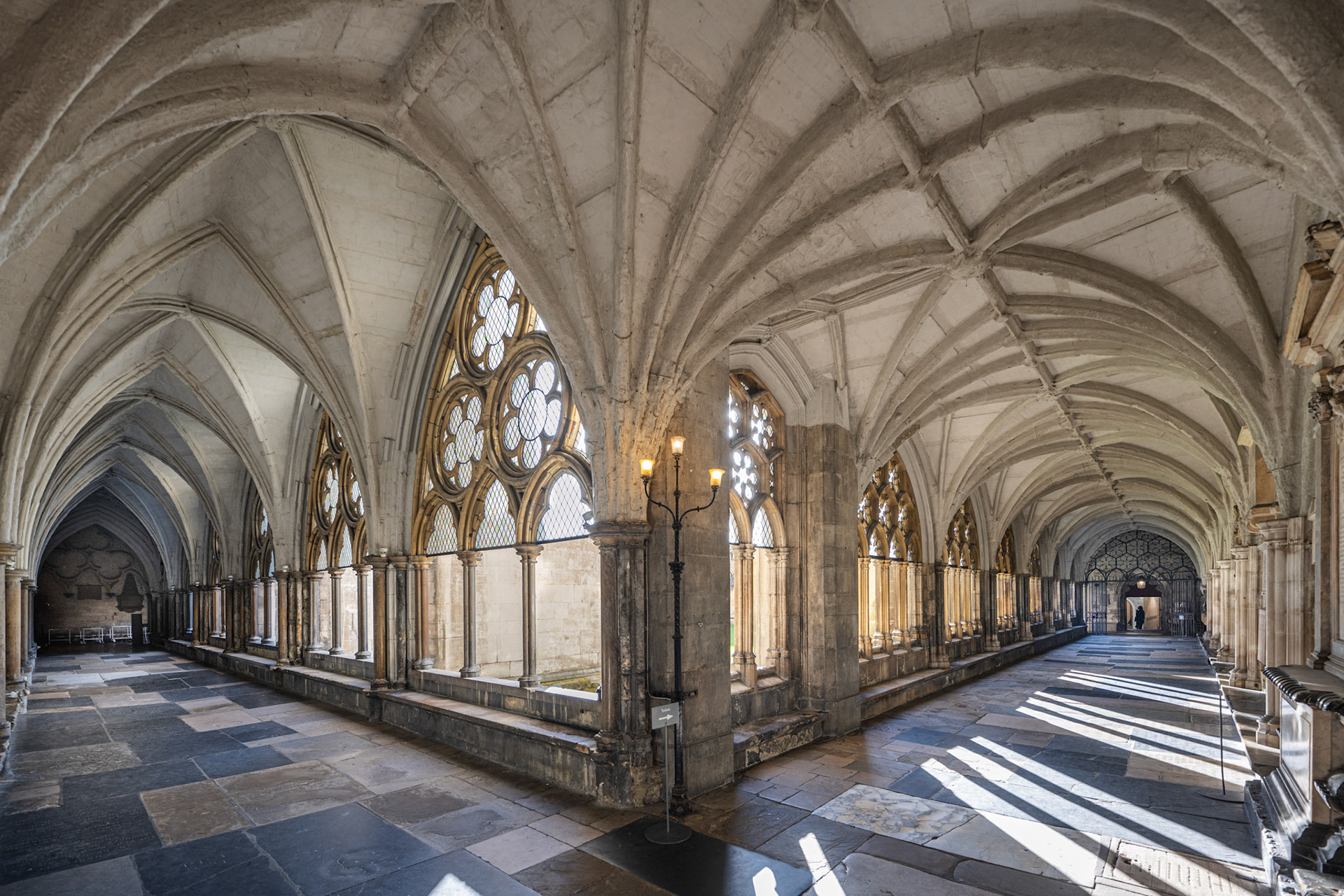
The cloisters of Westminster Abbey date from the 13th to the 15th century
Photography tip: Secure early morning tickets and arrive ahead of time to be among the first visitors to enter Westminster Abbey. This way, you can potentially have some of the spaces all to yourself !
You may also like